- News
- Reviews
- Bikes
- Components
- Bar tape & grips
- Bottom brackets
- Brake & gear cables
- Brake & STI levers
- Brake pads & spares
- Brakes
- Cassettes & freewheels
- Chains
- Chainsets & chainrings
- Derailleurs - front
- Derailleurs - rear
- Forks
- Gear levers & shifters
- Groupsets
- Handlebars & extensions
- Headsets
- Hubs
- Inner tubes
- Pedals
- Quick releases & skewers
- Saddles
- Seatposts
- Stems
- Wheels
- Tyres
- Tubeless valves
- Accessories
- Accessories - misc
- Computer mounts
- Bags
- Bar ends
- Bike bags & cases
- Bottle cages
- Bottles
- Cameras
- Car racks
- Child seats
- Computers
- Glasses
- GPS units
- Helmets
- Lights - front
- Lights - rear
- Lights - sets
- Locks
- Mirrors
- Mudguards
- Racks
- Pumps & CO2 inflators
- Puncture kits
- Reflectives
- Smart watches
- Stands and racks
- Trailers
- Clothing
- Health, fitness and nutrition
- Tools and workshop
- Miscellaneous
- Buyers Guides
- Features
- Forum
- Recommends
- Podcast
feature
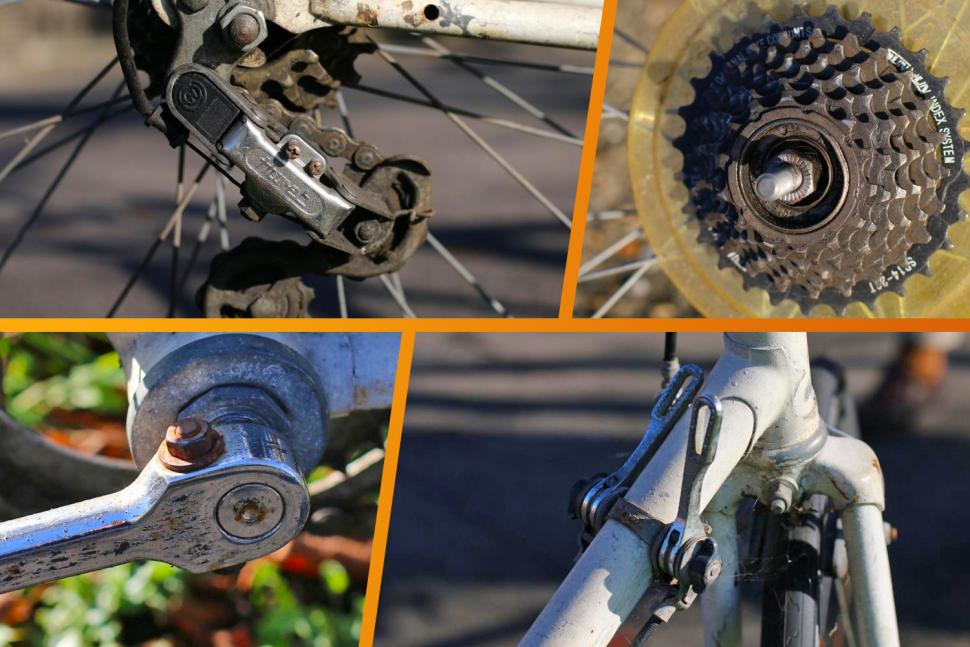 8 bike technologies we're well rid of Nov 2022
8 bike technologies we're well rid of Nov 20228 bygone bike technologies we're now well rid of
Browse bike ads on eBay and Facebook Marketplace and you’ll see a lot of ‘vintage’ bikes and half-finished ‘projects’ featuring archaic bike parts that have all but vanished from mainstream cycling use — for good reasons. Here are eight dubious and archaic features that you should swerve if you’re shopping for a second hand bike...
Cottered cranks
A cottered crank is held on to the axle by a shaped bolt called a cotter pin. The axle is mostly round with a section at the end where the crank sits. The cotter pin has a matching flat side, cut at an angle. The pin goes through the crank and when you tighten its nut that clamps the crank against the axle.
> How to fit new cranks to your bike
Problem number one with the design is that the cotter pin has to be extremely tight — it’s better to hammer or press it into place rather than just relying on the nut — which makes it difficult to remove to maintain the bottom bracket. Problem number two is that for the whole assembly to fit together really well, the cotter pin should be filed to fit snugly against the axle, which is a whole other pile of hassle.
Cotter pins were made obsolete by aluminium cranks with square taper axles, which were lighter and easier to fit, though a couple of companies actually made aluminium cottered cranks.
Suicide levers
Cheap road bikes often used to come fitted with these ‘safety’ brake extension levers that made it possible to brake from the tops. But they often reduced the possible lever travel because they slotted into the regular brake levers and being a long bit of flappy aluminium they were really flexible. The practical upshot was that they’d bottom out on the handlebar if your brakes weren’t perfectly adjusted — and how many cheap bikes ever had perfectly adjusted brakes?
Amazingly, you can still buy them, but this link is provided only for amusement; please don’t. Instead, if you want to be able to brake from the tops, get cyclo-cross style ‘interrupter’ levers (shown above) that clamp to the handlebar.
Steel rims
Not even the most ardent member of the Ferrous Tendency (motto: “Steel is real”) wants to see the return of chromed steel wheel rims. Not only were they heavy and prone to rust if the chrome got scratched, but they were hopeless if you needed to slow down in the rain.
Wet chromed steel is very slippery and rubber brake blocks just don’t get any purchase on it. Braking on a bike with steel rims is therefore a matter of waiting till the brakes have rubbed all the water off the rim, and hoping that happens before you hit something. Leather-faced brake blocks help, but just swapping the wheels out for aluminium ones is a far better idea.
The only current bikes I can find with steel rims are deliberately retro-styled roadsters with rod brakes. EU and UK standards dictate how well brakes have to work, including when wet, and you have to wonder how such bikes meet the standards — or even if they do.
Screw-on freewheels
There was a time when your rear wheel sprockets sat on a ratcheting mechanism that was separate from the rear hub and screwed into place. There were several problems with this design, ranging from irritating to actually dangerous.
The worst was that a threaded hub had a significant length of unsupported axle between the bearings and the frame, which often led to bent or even broken axles. That became more and more of a problem as gearing grew to six and seven sprockets. By moving the drive-side bearing much closer to the dropout, Shimano’s freehub design solved the problem and eventually led to the 11, 12 and even 13-sprocket hubs we have now.
> Where cycling products go to die: bike tech that didn't catch on
If the threads of a screw-on freewheel aren’t greased on assembly they can seize on the hub; they’re usually steel, the hub’s aluminium and bimetallic corrosion is your sworn enemy. Yes, this is preventable, but if it happened removing a screw-on freewheel was often made more difficult by the removal tool. These often had a pair of dogs that engaged with notches in the freewheel body. Both dogs and notches were fragile and often broke.
Screw-on freewheels have never quite gone away though; you still find them on some budget bikes. Thankfully, every multiple-sprocket screw-on freewheel I’ve seen recently used Shimano’s splined remover, the same pattern as their cassette lockrings.
Annoyingly, screw-on freewheels have started creeping back on bikes with four-figure price tags, because they’re used on e-bikes with hub motors. These hubs often have huge axles that only just fit through the freewheel body, so you need a special, ultra-thin tool to remove them.
Down tube levers
I think Shimano’s introduction of combined brake and shift levers in 1990 paved the way for the MAMIL cycling boom of the 2000s and beyond. One of the things that often made new riders nervous about road bikes was having to take a hand off the bars to reach down and change gear. Putting shifting control into the brake levers fixed that problem.
Someone will comment that down tube levers are fine when you get used to them, because you develop muscle memory for where they’re positioned. That’s true — but irrelevant, because we’re talking about first impressions here, and for many riders that first impression was ‘this is difficult’.
One answer was to put shift levers up on the handlebar stem, where they lurked ready to stab you in the vitals if you crashed. That’s a bad idea that still hasn’t been completely hounded out of existence.
I started cycling in the days when down tube levers were the only type of gear lever, but these days you’ll take my combined brake/shifter levers out of my cold dead hands — and can you imagine gravel bikes with down tube levers?
Huret Eco and other straight parallelogram derailleurs
Every modern derailleur owes its basic operation to the Campagnolo 1951 Gran Sport mechanism, which used an articulating parallelogram to move a jockey wheel across the sprockets. Campagnolo wasn’t the first.
A French company, Nivex, made a parallelogram derailleur in the 1930s, but it was rather swamped by the vast range of derailleur designs at the time, and racers of the 1930s mistakenly believed its two pulleys added excessive friction to the transmission.
The Gran Sport might not have been first, but it was tough, mechanically simple and worked well compared to other derailleurs of the era. It was a roaring success.
The Gran Sport spawned scores of clones from companies you might have heard of such as Shimano and Mavic, and from many that are long gone like Zeus, Simplex, and Galli. There were even Soviet derailleurs such as Tectoron and Kharvov.
But the most commercially successful of them all was the Huret Eco, which was ubiquitous on cheap road bikes from the late 1970s until some time in the late 80s or early 90s. It’s hard to determine when production of the Eco ceased because, unlike product introductions, product death doesn’t usually come with a marketing fanfare. Huret was later bought by Sachs and it’s possible the Eco limped along until SRAM bought Sachs in 1997.
Straight parallelogram derailleurs like the Eco (and even the Campagnolo versions, however nicely they were made) don’t generally shift very well because they end up with a big length of laterally flexible chain between the top jockey wheel and smaller sprockets. Even the cheapest modern derailleurs, like the Shimano Tourney, shift better thanks to subtle tweaks in their geometry.
As well as not shifting very well, the Eco had a tendency to seize up if it wasn’t maintained. Its sole advantage was that being made of pressed steel and rivets, it was very, very cheap. The domination of Shimano and the availability of better-functioning alternatives killed it off.
Galvanised and chromed spokes
You coat steel in zinc to stop it rusting; your granny probably had a zinc-coated steel dustbin. Unfortunately low-grade steel that needs galvanising to stop it rusting also tends to have a short life if you repeatedly load and unload it, which is exactly what happens to spokes. Galvanised ‘rustless’ spokes therefore can fail by metal fatigue after just a few hundred miles.
Stainless steel has much better resistance to metal fatigue, which is why anyone trying to build wheels with reasonable durability uses stainless spokes.
There was also a vogue for chrome-plated spokes, which were very shiny and looked amazing on a sunny day. Unfortunately, chromium-plating steel can make it brittle, which is a property you really don’t want in a spoke, so their fatigue life was poor, and the chrome would rub off at the spoke crossings, allowing for unsightly rust.
Wingnuts
“Something must change in the rear.”
According to legend, that’s what Tullio Campagnolo said to himself after losing a race because of wingnuts. The story goes that in the 1920s Campagnolo, at the time a talented amateur racer, was in a small lead group in the late-season Gran Premio della Vittoria. The weather was foul and Campagnolo’s hands were so cold he was unable to undo the wingnuts that held his rear wheel in place.
Depending on which version of the story you go for, Campagnolo either had a puncture or needed to change gear for the climb of the Croce d’Aune pass. At the time racers eschewed derailleurs and you changed from high to low gear by flipping the wheel to use the larger sprocket.
Faffing with frozen fingers, Campagnolo lost his spot in the lead group; and muttering “something must change in the rear” to himself, headed for his workshop in his father’s hardware store to consign wingnuts to the dustbin of history by inventing the quick-release hub.
As well as being hard to operate with cold hands, wingnuts are difficult to get properly tight if you don't have lots of hand strength. Bolt-up wheels still exist but use 15mm nuts that you tighten with a spanner usually about 15cm long. That gives a lot more leverage to get it properly tight than can be attained with wings less than 5cm long.
Incidentally, it’s possible the famed GP della Vittoria incident never happened. For a start, nobody seems to be able to agree if it happened in 1924 or 1927. Derailleur historian Frank Berto gives both years in The Dancing Chain.
Jan Heine of Bicycle Quarterly writes that his researchers — including David Herlihy, author of Bicycle: The History — have been unable to find any contemporary reference to Campagnolo taking part in the GP della Vittoria, or of Campagnolo’s claimed 1930 patent on the quick-release.
Let us know your 'favourite' cycling tech fails from yesteryear in the comments below
John has been writing about bikes and cycling for over 30 years since discovering that people were mug enough to pay him for it rather than expecting him to do an honest day's work.
He was heavily involved in the mountain bike boom of the late 1980s as a racer, team manager and race promoter, and that led to writing for Mountain Biking UK magazine shortly after its inception. He got the gig by phoning up the editor and telling him the magazine was rubbish and he could do better. Rather than telling him to get lost, MBUK editor Tym Manley called John’s bluff and the rest is history.
Since then he has worked on MTB Pro magazine and was editor of Maximum Mountain Bike and Australian Mountain Bike magazines, before switching to the web in 2000 to work for CyclingNews.com. Along with road.cc founder Tony Farrelly, John was on the launch team for BikeRadar.com and subsequently became editor in chief of Future Publishing’s group of cycling magazines and websites, including Cycling Plus, MBUK, What Mountain Bike and Procycling.
John has also written for Cyclist magazine, edited the BikeMagic website and was founding editor of TotalWomensCycling.com before handing over to someone far more representative of the site's main audience.
He joined road.cc in 2013. He lives in Cambridge where the lack of hills is more than made up for by the headwinds.
Latest Comments
- hapaxlegomenon 56 min 22 sec ago
did you guys… or perhaps girls I suppose… really take points off because these tires are difficult to mount? 😭😭😭😭
- lonpfrb 2 hours 18 min ago
No, it's meant literally that the narcissistic sociopath in chief prefers all his loyal supporters in that position. I neither know, nor care, if...
- hawkinspeter 3 hours 8 min ago
Fire engine gets stuck behind east Bristol LTN bollard:...
- Rendel Harris 3 hours 53 min ago
Oh dear, you still don't understand, do you? Nobody has restricted his right to free speech, nobody has banned him from any platform, people are...
- mdavidford 4 hours 40 min ago
It's a lot harder to get hold of aftermarket mounts for lamb chops, too.
- David9694 5 hours 30 min ago
"Make me to know your ways, O LORD; teach me your paths." - Psalm 25:4
- anotherflat 5 hours 56 min ago
So uninsured?...
- Bigtwin 6 hours 52 min ago
Is the relvant authorites are so inept they can't even efficiently tax someone who sole relevant skill is that they drive a car quickly in a circle...
- Bigtwin 7 hours 40 sec ago
Clarkson. Fat moron's icon talking tocix ill-informed bollix shocker. If ever there was someone who should just be put out to grass with the rest...
- Garethhall74 7 hours 35 min ago
It will be interesting what new features or functions the new Booky and Roam V3's have, plus if any new functions get added to the element app....
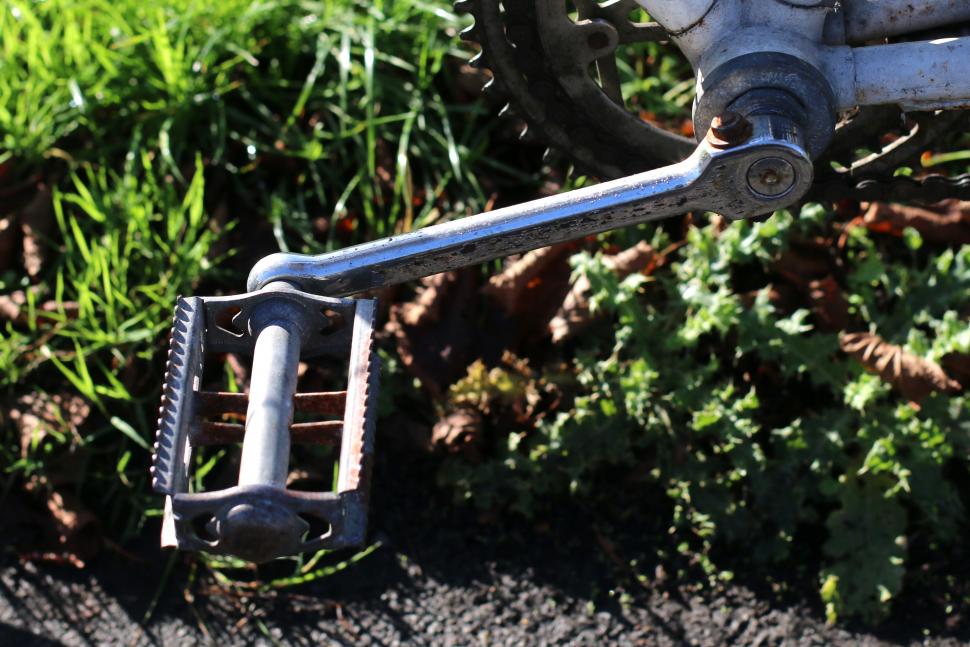
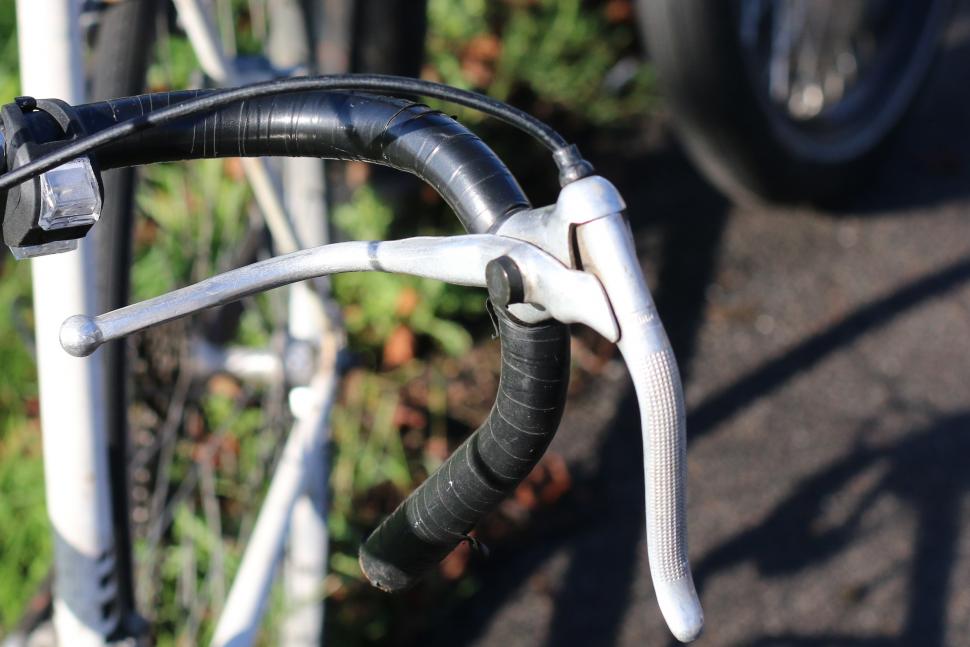
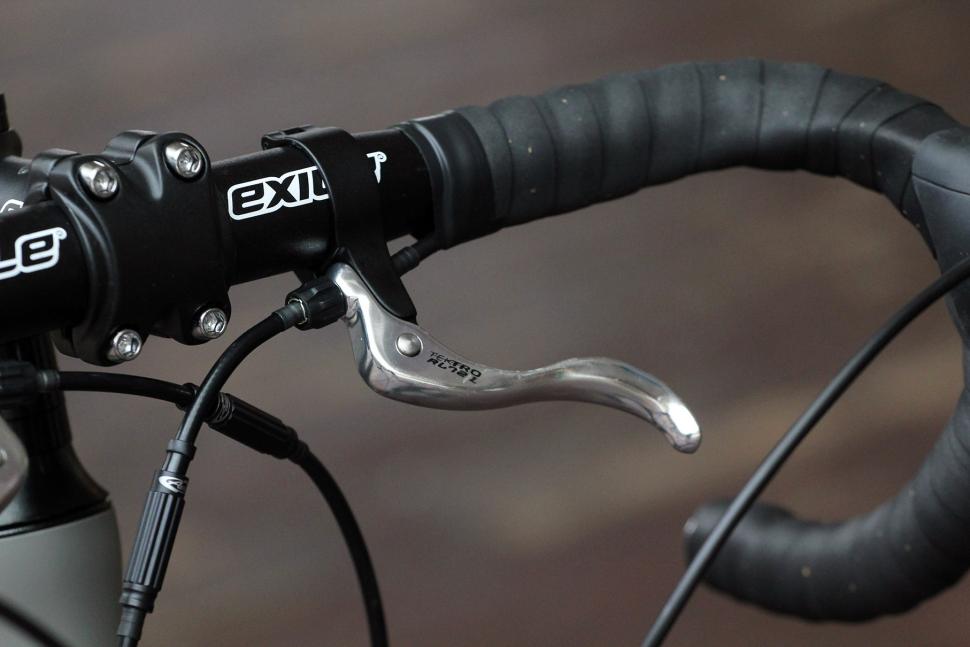
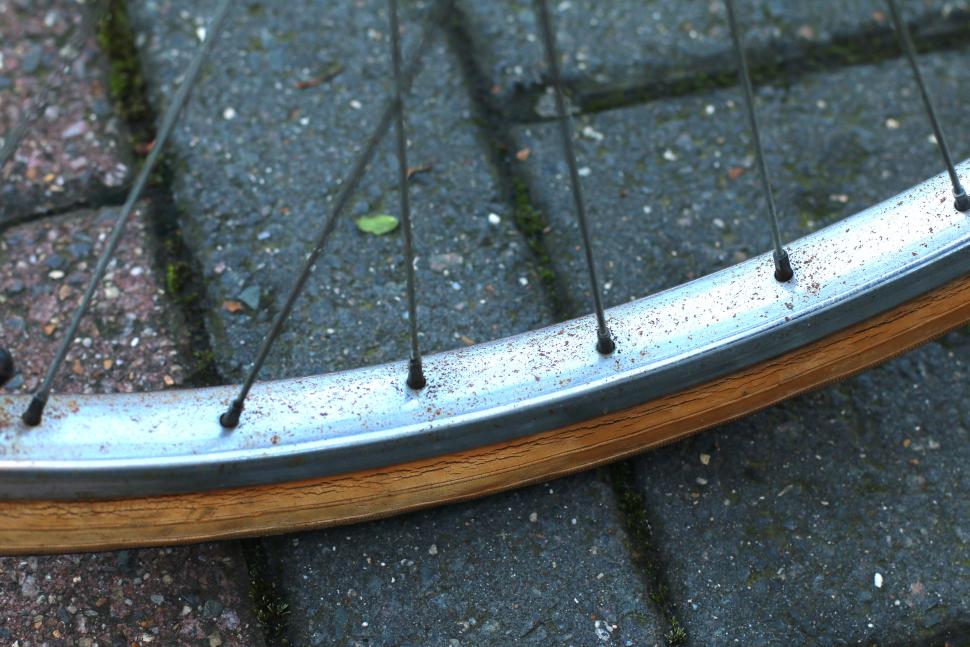
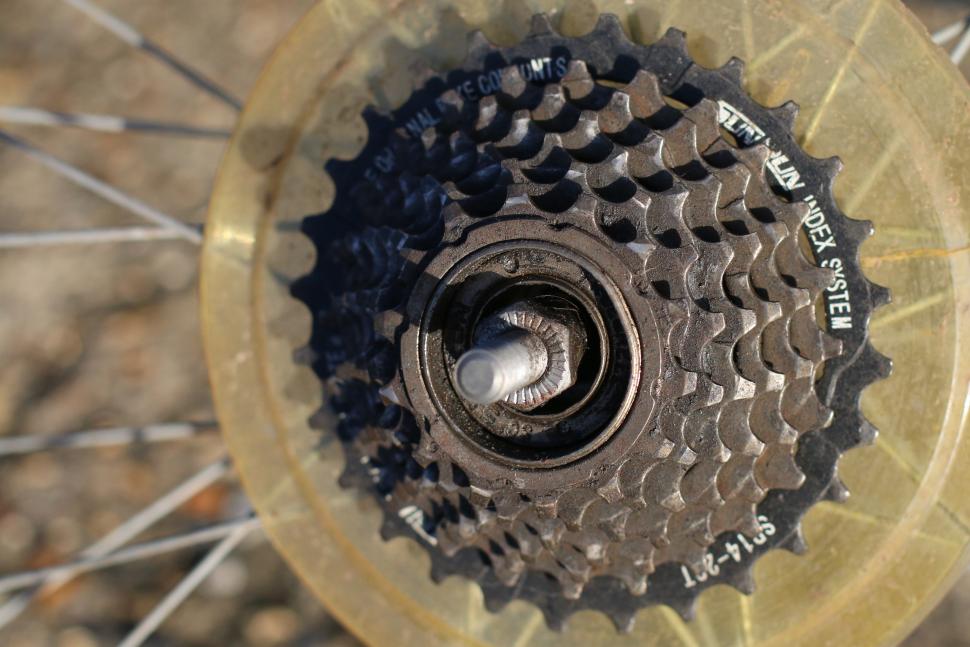
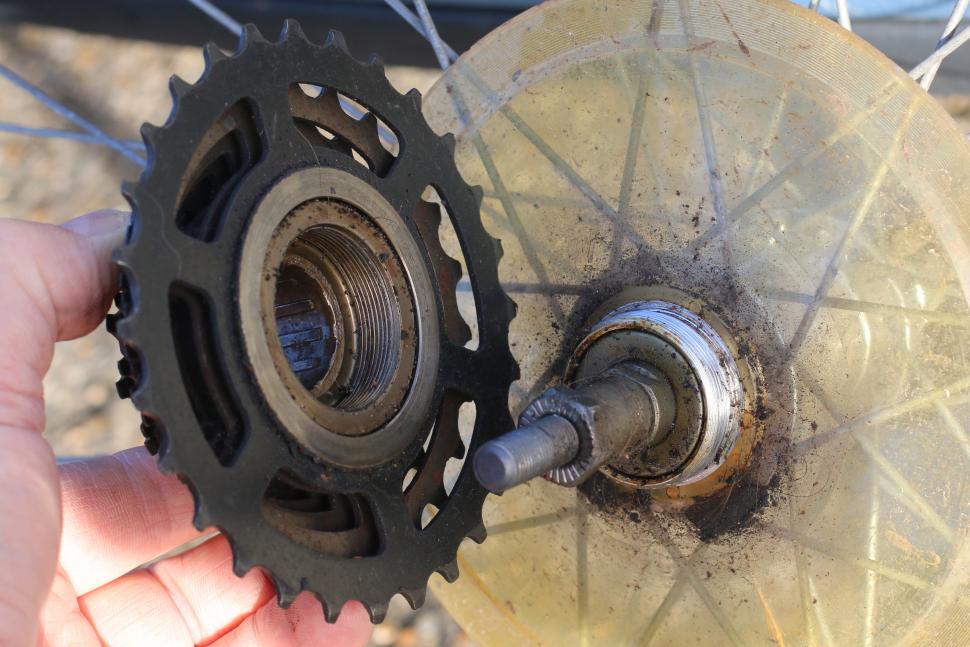
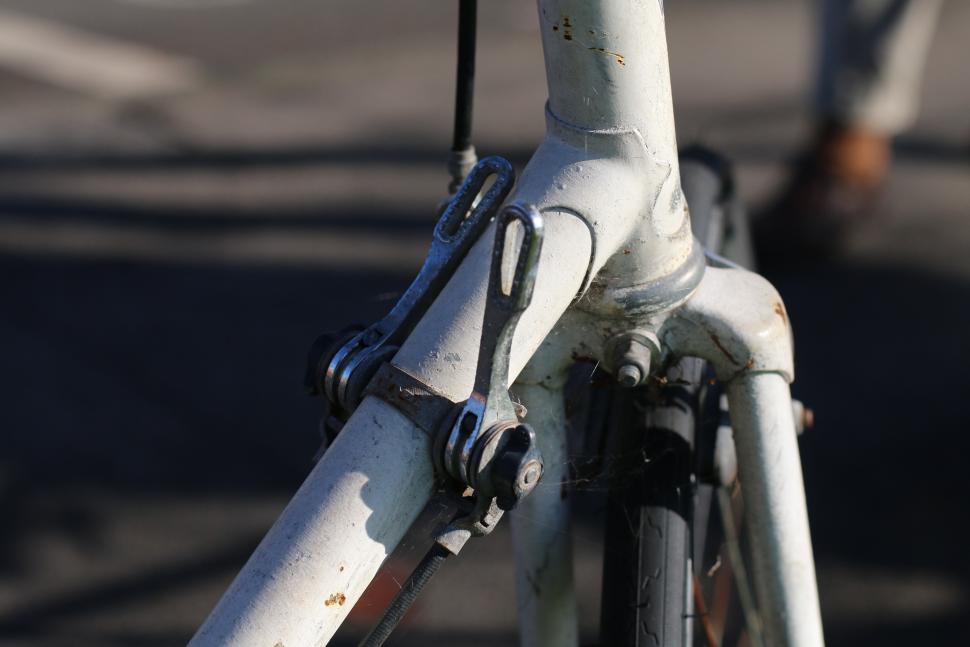
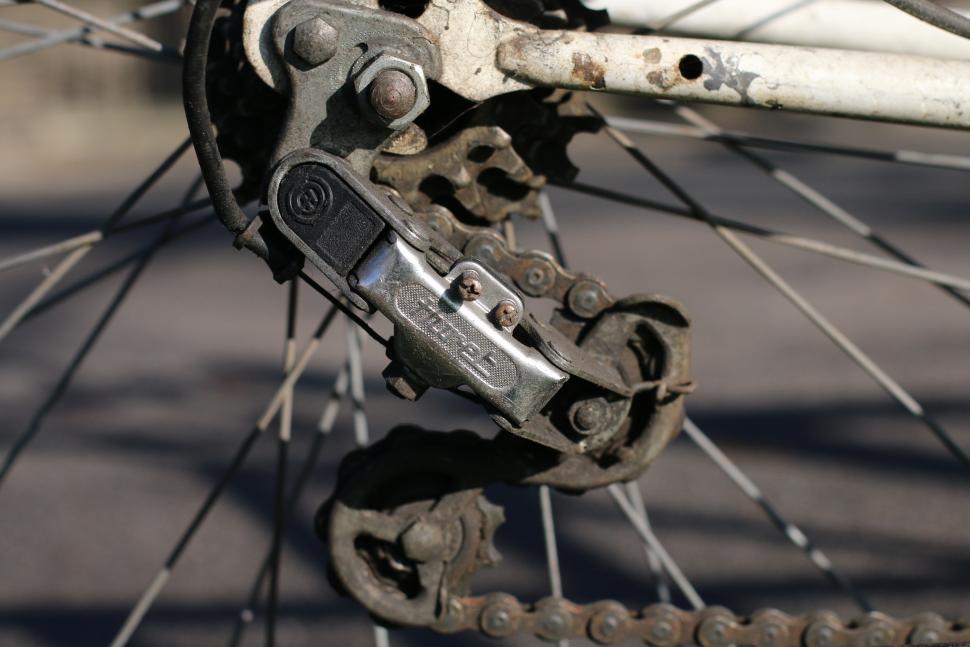

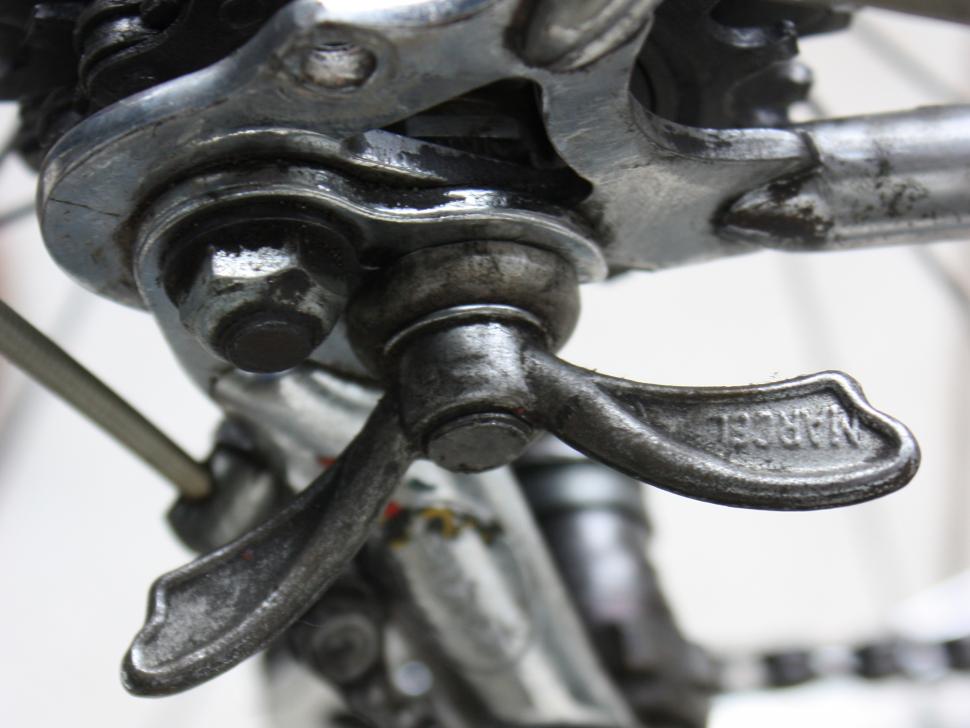
Add new comment
58 comments
I grew up with most of these on my £49 back of the Daily Mirror mail order 5 speed BSO, bought c.1983. If you squinted really hard it looked like a titanium finish Raleigh Equipe. It was actually rather wonderful and I was gutted when it was stolen from college, having seen me through secondary school
I remember whaling on the cottered cranks in particular to get them tight enough to not click like a pressfit BB after one dousing with a November puddle. And the suicide levers were indeed lethal in traffic, particularly paired with Weinmann brakes and pads. I have to say I never really got to grips with downtube shifters but I think that's because we didn't have the internet back then and no-one taught me how to use them properly.
As an occasional fettler of BSOs for kids in my son's class I'm still subjected to screw on freewheels, they are indeed to spawn of the devil.
Ah yes, the "back of the paper BSO" - probably the Tensor "Lazer Custom", popular in the early 80s round my way. At age 12, you ignored the gas-pipe steel tubing and chocolate brakes, because it was a "5 speed racer" - the coolest thing about those was the Dutch style spoke lock thingy on one of the chain stays.
I had a Mongoose BMX back then (20" shopper wheels & tyres for paper rounds in the week, Arayas & Comp 3s for the weekend), the knee injuries are coming home to roost now at age 53.
With the 10 speed Tensor you could have a gold coloured chain that never needed oiling. Allegedly. They'd have been better concentrating on forks that never needed replacing...
I'm reading this knowing my vintage bike with cottered cranks, downtube shifters, suicide levers, Huret Eco derailleur, thread-on freewheel and chromed steel rims that I use to get around London is sat in the bike shed outside... At least I don't have the original wingnuts on the wheels anymore!
I always get compliments on it from all types of other riders though, unlike my modern Cube
Cotter pins.... say no more. Awful bloody things
Sadly non-stainless steel spokes do persist. Frog bikes seem to use painted (non stainless) steel spokes on their bikes, and Mavic Ksyrium Equipe and Cosmic series wheels (yes those really expensive aero wheelsets) used to use painted steel spokes too. Handy for a magnet to stick to them, not so good to combat rust.
Muscle memory definitely a thing. About ten years ago, when I got my first road bike in about 25 years, the STI levers were a revelation ... but it was still a couple of months before I stopped reaching for both the downtube shifters and the suicide levers!
Agree with all the above - except down-tube levers, which are a) cheap b)super-reliable.
My better half still commutes on a 35 y.o. bike fitted with the original 6 speed SIS.
Never a problem, and better than the unindexed types which we were all used to back then.
Brifters: expensive, temperamental and no easier for a new rider to master.
I've got a couple of bikes running brifters, but mostly I'm all steel and 10s downtube levers now.
These two are off my current do-er up-er: they look worn out after, I'm guessing, 50 years' service, but the derailleur mechanism works well.
Gone back to a bike with downtube shifters, took a few days to get used to but love them now. Quick and accurate, also cost me nothing
One day, this kind of article will feature Shimano's hollow-bonded cranks (e.g. Ultegra and Dura-Ace)
I saw "Cottered cranks" and immediately looked for you demanding their return to replace said "quick release" crank technologies!
It's odd that Shimano managed to screw up some of their road cranks but i've never heard of any issues on any of their hollow forged mountain bike cranks (and they have a far harder life). They're still by far the best combination of weight and price and have the best attachment method. (Some of the mtb competition are still using the 'ridiculously bastard tight' appraoch)
I don't think I have ever managed to destroy any of my Shimano MTB cranks.
Several Middleburns, and a beautiful blue Kooka, that I paid well over the odds for on eBay, so retro. That died somehow when I was gently hit by a bus.
They're not hollow forged, and that's the problem... they combine what looks like a sand cast aluminium piece with a pressed aluminium facing, glued together with something like chewing gum or putty. A triumph of hope over experience. And the finish on the pressed piece never matches the finish on the chainrings. Really rubbish!
You're right, I meant to say hollow-bonded. Just edited it now.
glued together with something like chewing gum or putty
No, no, no! Pay attention!! It's pasta. I'm not disputing your engineering points, and it may be a story unfair to Shimano, but I prefer HPs myth
There's a strong connection between Italy and cycling, so Shimano thought they'd try something new and put aside all their expert Japanese forging experience. After all, the penne is mightier than the sword.
Is this a new, non-zombie article?! Well done road.cc! As for the listed technologies, I used or encountered all of them at one time and another and can confirm we are well shot of the lot of them. I had quite a few years with down-tube gear levers but it was obvious they had to go even before STI/Ergo became available. I was drafting a bus (ok, bad idea) on Bridge St Reading once and had a hand off to change gear at the exact moment a pothole hoved into view. Cue rider splattering painfully across the street. I did manage to get a small amount of money off the council, mainly because I thought to take a photo of the pothole the same day before they fixed it the next day.
had you spent any real time with down-tube shifters your pothole thing never would have happened. Pro riders used down-tube shifters for many years and riders were not crashing a lot.
I spent plenty of time on DT levers. Shit happens. Get lost.
What froze wrote. I hear you though because though I spent my early teen years with them (once I got gears...) 15 years of piano key shifting meant I unlearned this. Picked up an old Dawes Galaxy (a hack - but an indestructable one that I've grown to live with) just prior to a ten day tour and had a few emotional moments while relearning this.
Non indexed down tube shifters took some getting used to on my first road bike (mid 1960s). Mind you, we didn't have many gears to shift.
Yeah, ran a bike with friction shifters a few years back. Listening to make sure it was dialled in.
My 1983 Orbit Gold Medal came with 10 speed down-tube friction shifters. In 1983 I had the bike renovated, including an upgrade to 7-speed Tiagra (still using the down tube levers) with STI for the rear mech., but I'd become so comfortable with listening to know when the gears were about to change/were properly positioned that I always switched the lever to its friction setting. Barring a replacement front mech (to replace the one that was broken during the move to Australia) the same set up is still on the Orbit today, and is still my first-choice ride over the more modern ones I own.
1983, 7 speed Tiagra?
Ooooops....well caught! The renovation was 2003.
😀
Maybe 8 speed as well? Was Tiagra ever only 7 speed? Not that it really matters!
Pages